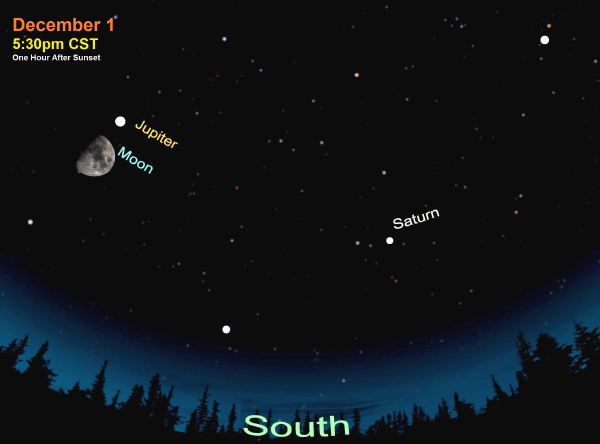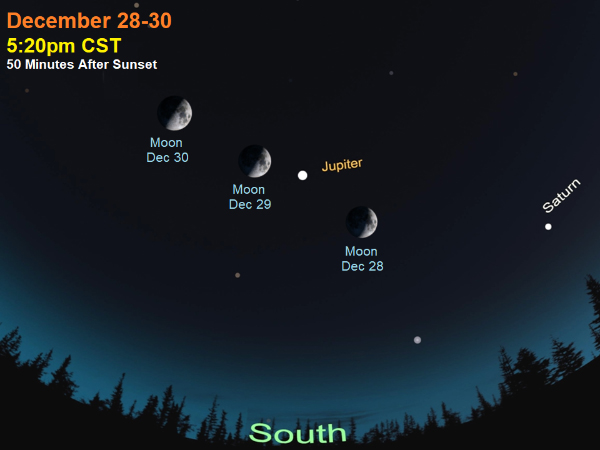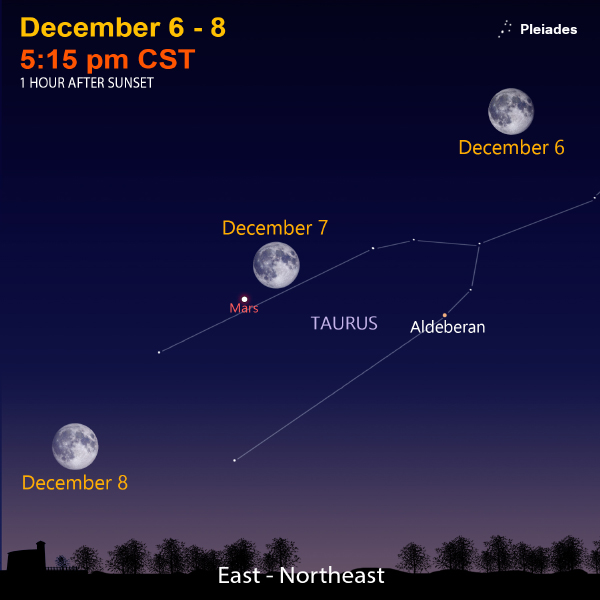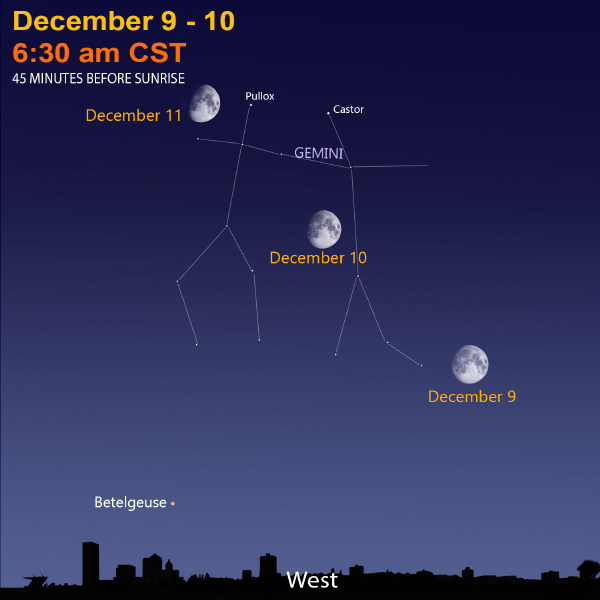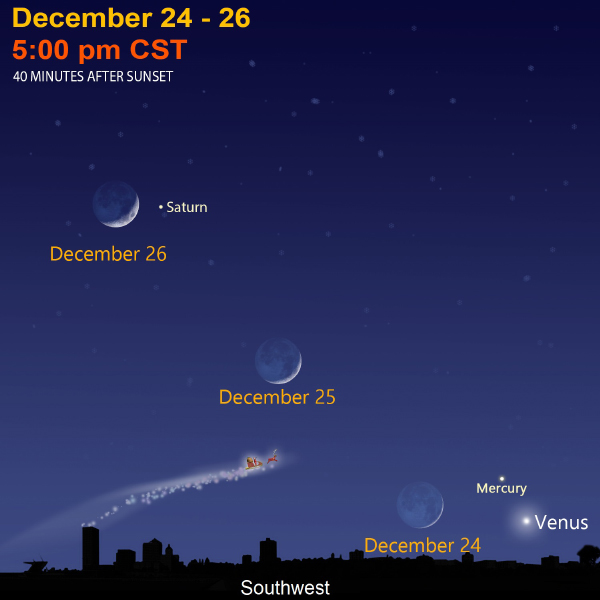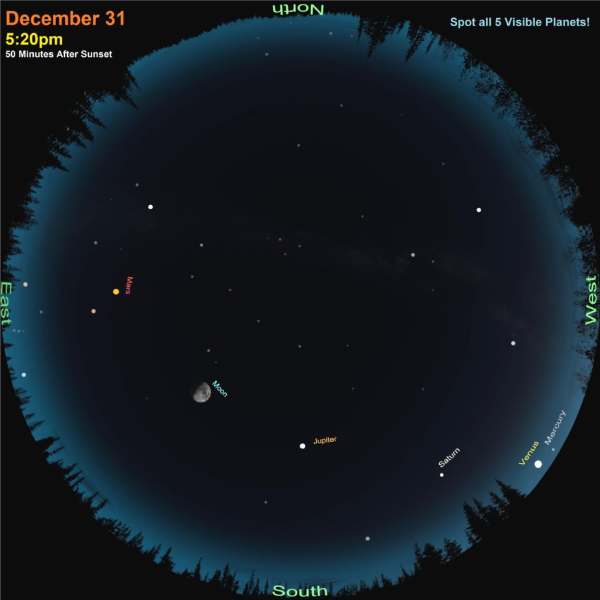Cosmic Curiosities
“Mars is the only known planet inhabited by robots.”
- Brian Solis, American Speaker & Author
A Day in Space-Life
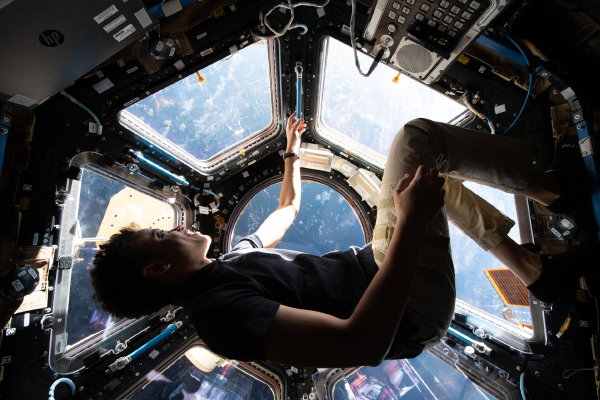
NASA’s Jessica Watkins enjoys the view of Earth from inside the seven-windowed cupola on the ISS. Credit: NASA
One of the most exciting jobs just has to be an astronaut. Floating all day? Exquisite views of our planet below? I can’t imagine a better occupation than trekking around the Earth at five miles per second aboard the International Space Station (ISS)!
Okay, so maybe astronauts don’t bask in zero gravity and look out the window all day. But what’s it really like to be an astronaut?
The day starts at 6:00 a.m. Greenwich Mean Time (GMT)—midnight in Wisconsin. The first task astronauts typically do is check their schedule. Overnight, the ground crew will come up with different tasks that need to get done that day. Flexibility varies depending on how involved the ground crew needs to be with the task at hand. After getting dressed, eating breakfast, and checking with the control center, the day begins!
Work days tend to be 12-hour days, with 11 of those hours dedicated to the assignments given by ground control (but with time for a lunch break). Tasks mostly consist of different science experiments. At its core, the ISS is a giant science lab where the effects of microgravity (often called zero-g) are tested. The prize test is us—humans! How does microgravity affect the human body?
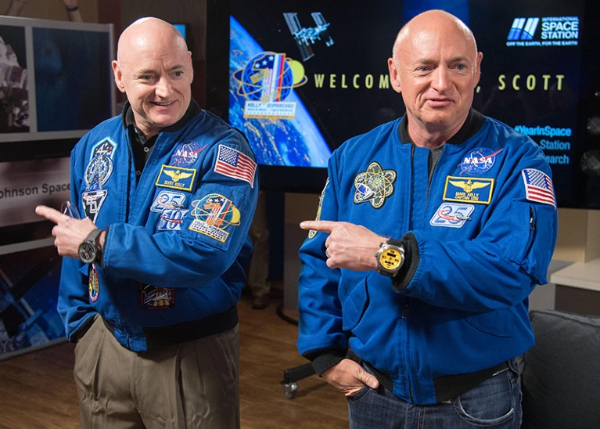
Mark Kelly, at right, with his identical twin Scott. Credit: NASA
Recently, a famous test was done on NASA’s identical-twin astronauts—Mark and Steve Kelly. Steve spent almost one year while Mark stayed on the ground. The results? Many of the genetic and biochemical changes that had affected Scott mostly disappeared once he returned from space.
Next up is food and botany! Microgravity affects plants much differently than on Earth. If astronauts venture further into space, it will be crucial to know how to best grow and eat your meals.
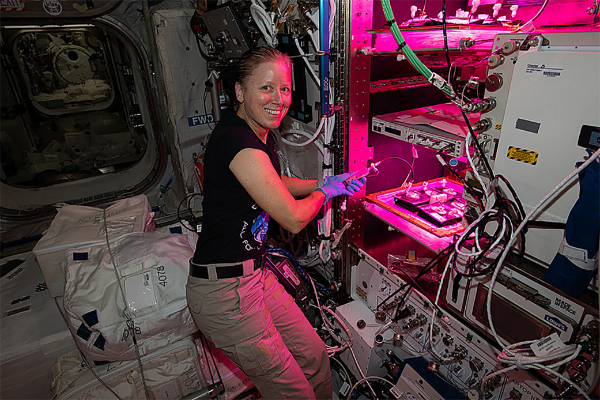
NASA Astronaut Shannon Walker works with various plants for a botany experiment. Credit: NASA
NASA calls these experiments “Veggie.” This Vegetable Production System—or space garden—resides on the space station. It’s pretty small, about the size of carry-on luggage, and typically holds six plants. Each plant grows in a “pillow” filled with a clay-based growth media and fertilizer. LED lights orient and guide planet growth. Since plants reflect green light and use more red and blue wavelengths, the Veggie chamber typically glows magenta pink.
Another activity is ISS maintenance. The space station is fairly old! It has been in orbit for more than 20 years. To keep it running smoothly, it needs regular care and attention—just like any apartment, house, or car. These tasks can be almost anything, from updating computer software to construction work.
Sometimes, the job takes the astronaut outside—a spacewalk! To venture into the vacuum of space, an astronaut spends 45 minutes just to put on their space suit. The average spacewalk is around six hours, but the views are incredible!
Exercise is vital while living in space. Spending long periods floating in microgravity has negative effects on bone and muscle strength. Normally, two hours per day will be dedicated to different exercises where astronauts have the option of a treadmill, a bike, or a weight resistance machine. Two astronauts even ran a marathon in space (26.2 miles)! Sunita Williams became the first track star when she ran the Boston Marathon in 2007. Nine years later, Tim Peake ran the London Marathon.
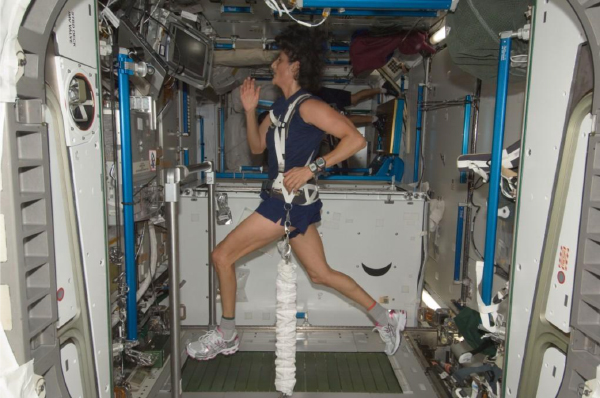
NASA astronaut Sunita Williams exercises on the Combined Operational Load Bearing External Resistance Treadmill (COLBERT) on the ISS
The end of the day consists of one last check in with the control center, dinner, and a check in with friends and family. Scheduled sleep time starts at 9:30 p.m. GMT. Astronauts have their own quarters and sleep in a sleeping bag attached to the wall. It looks like they sleep standing up!
Weekends are similar to those at home on Earth. Saturday is normally a house-cleaning day and on Sunday astronauts are off duty.
This is just a small glimpse into life on the ISS. Curious for more? Hop on NASA’s YouTube channel where astronauts from all over the world share their space experiences. Needless to say, they’re out of this world!
Blood Mars
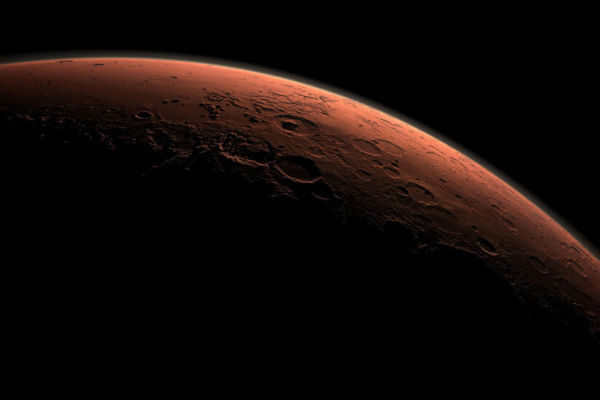
Credit: NASA
Last month, we had a Blood Moon for the total lunar eclipse. This month, we take a closer look at Blood Mars.
While the moon turns red because of our atmosphere bending the sun’s spectral light differently, Mars is always red in the sky. Obviously, the red planet comes in various crimson hues; NASA’s close-up pictures reveal Mars as more brown or tan.
As you gaze skyward, you can glimpse the reddish tint of Mars. It’s not always obvious at first, but if you compare the color of Mars to Jupiter—which shines west of Mars—you definitely notice its vibrant red glow.
So, you might ask, why is Mars red? The answer lies in the composition of the rocks. They contain iron oxide—the same ingredient that makes our blood red.
We don’t have to go to Mars to find red rocks; there are plenty here on our blue-and-green Earth. For example, Arches National Park in Utah is a great place to visit. The magnificent rocks there are coated with a thin red-to-black coloring called desert varnish. This glaze covering is composed of manganese and iron oxides—same as Mars.
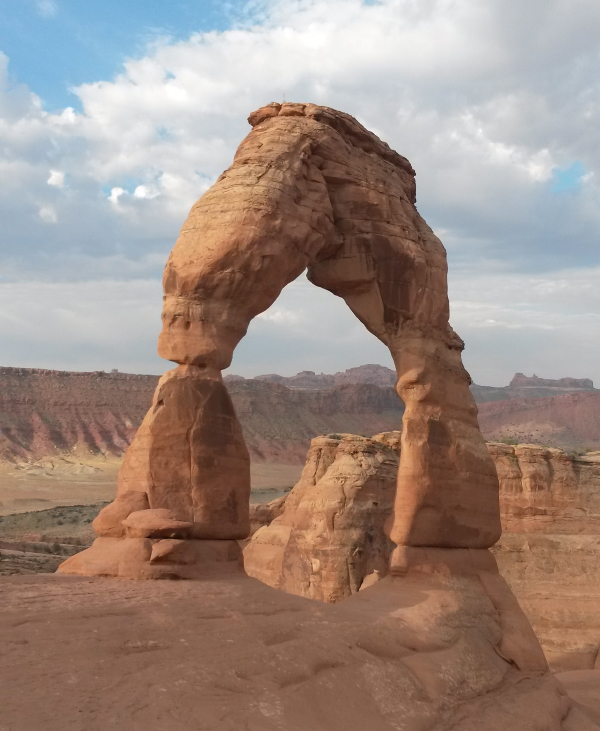
But why does Mars have so much iron? Why is it "oxidized?" Why does iron oxide look red?
When Mars was born 4.5 billion years ago out of the solar nebula, it accumulated some iron. All planets did. Iron is forged deep inside a massive star through nuclear fusion. When these stars die in spectacular nuclear fusion, iron spreads out through the expanding explosion. The supernova nebulas will eventually mix with other nebulae and then collapse to make new stars. This is how our sun and planets were born. On Earth, most of the iron sank to the core because of its fairly large size. Mars is smaller, meaning less gravity. So iron on Mars sank to the core, too, but not as much. It tended to spread out more, and much remained on the upper layers and the surface.
Alone, iron looks black. The element turns a reddish color when oxygen is mixed in. Iron oxide contains two iron atoms and three oxygen atoms. Today, the atmosphere on Mars is very thin carbon dioxide—but not free oxygen. No one knows for sure how oxygen rusted the Martian rocks. It could have come from water molecules breaking apart. There are heaps of evidence that water once flowed on Mars. Dust storms breaking up quartz crystals to release oxygen is another theory.
Like dye in a red shirt, iron oxide absorbs blue and green wavelengths of the light while reflecting the red wavelengths. Other molecules behave differently when encountering light photons. Chlorophyll in a leaf absorbs the red and blue most effectively and reflects green back to a human eye.
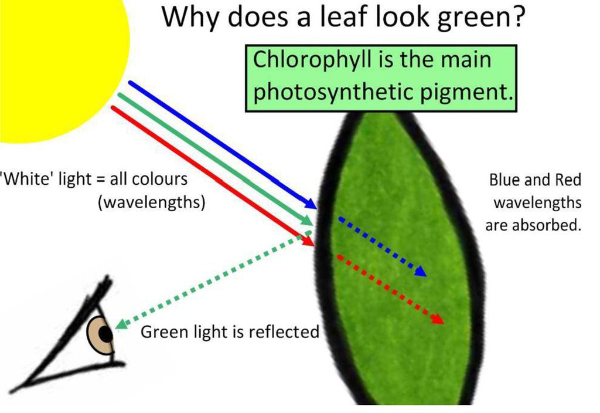
The red, bloody appearance of Mars led to various associations in ancient myths. The Greeks and Romans called Mars their “god of war.” To the Ancient Egyptians, the red planet was "Horus of the Horizon" and then later Her Deshur. The Hebrews named it Ma'adim—"the one who blushes." Chinese sky-watchers called it "the fire star." They also saw Mars as sign for "bane, grief, war, and murder."
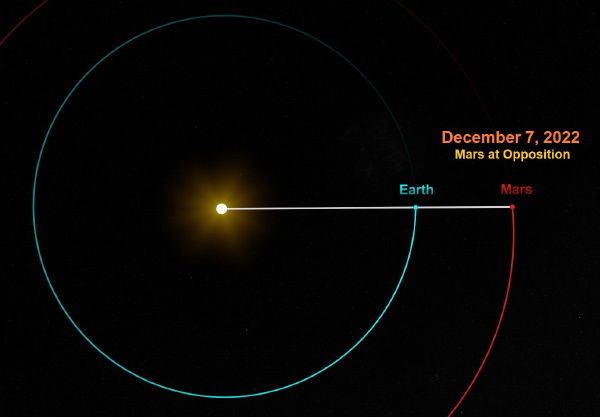
Mars is at opposition (opposite the sun) on December 7. This means our neighbor planet is close to Earth and shining bright—brighter than any star all night long!
Eclipsing Mars
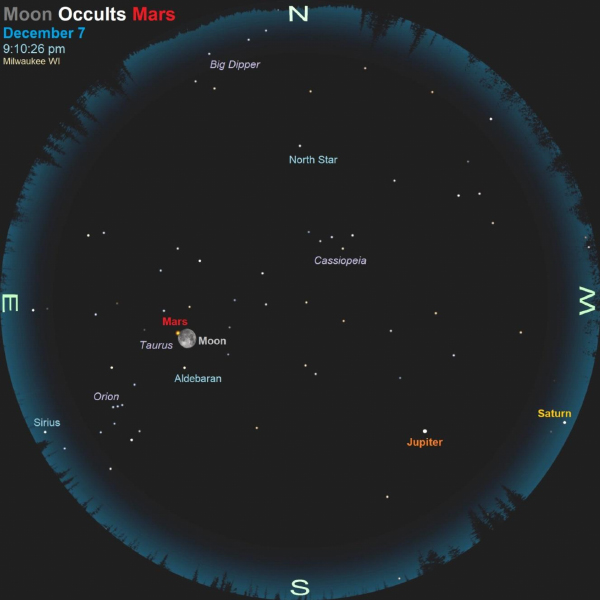
A rather rare cosmic sight is coming up on December 7—the moon will eclipse Mars! Officially, it’s called a lunar occultation. Both will be at their brightest, but it will be a little difficult to see Mars since it will be right next to the full moon. Binoculars will help!
Look up a few minutes before 9:10 p.m. and get ready for Mars to disappear! Cross your fingers for clear skies. Exact times are:
| MILWAUKEE, WI | |
|---|---|
| Disappearance of Mars: | 9:10:26 p.m. CST |
| Reappearance of Mars: | 10:08:16 p.m. CST |
| Total Occultation Time: | 57 minutes, 50 seconds |
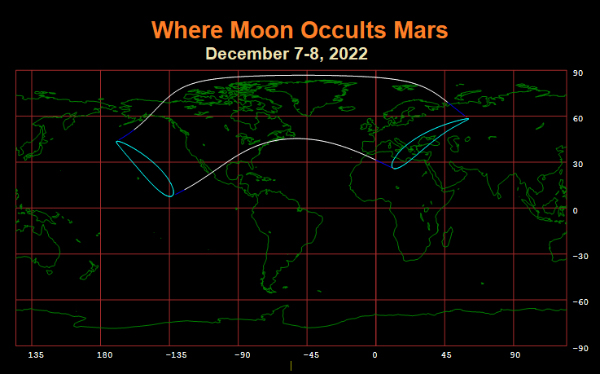
The event is visible across most of America except the southeast corner. Click here to find times for major cities.
Space in Sixty Seconds
Explore all five visible planets in December’s holiday night sky.
Sky Sights
Watch the Moon orbit pass Jupiter twice this December. On December 1, our Moon shines close to the largest planet. Then, on December 28-29, see a solar system replay.
Mars and the Moon shine together from December 6-8. The red planet will disappear behind the moon on December 7. Don’t miss this lunar occultation starting at 9:10:25 p.m. CST that night! The red planet comes back almost 58 minutes later, at 10:08:16 p.m.
After the full Moon on December 7, observe it through its waning gibbous phases as it passes the bright stars of Gemini.
Mercury and Venus become visible toward the end of December. On December 24, look very low in the southwest sky as soon as it gets dark enough—about 40 minutes after sunset. That’s 5:00 p.m. in Milwaukee, WI.
Saturn is the next stop for the Moon as it passes nearby on December 26. Look for Santa, too—you never know!
Finally, give yourself a challenge and try to spot all five visible planets on a clear night in late December. All should be easy to spot except for elusive Mercury.
Due to the Earth’s much faster orbit around the sun, both Jupiter and Saturn rise and set almost four minutes earlier each night. By mid-February, Saturn rises and sets with the sun and is not visible; same thing happens to Jupiter in early February.
December Star Map
Sign Up
Receive this newsletter via email!
Subscribe
See the Universe through a telescope
Join one of the Milwaukee-area astronomy clubs and spot craters on the Moon, the rings of Saturn, the moons of Jupiter, and much more.
Follow Bob on social media
Twitter: @MPMPlanetarium
Facebook: Daniel M. Soref Planetarium


